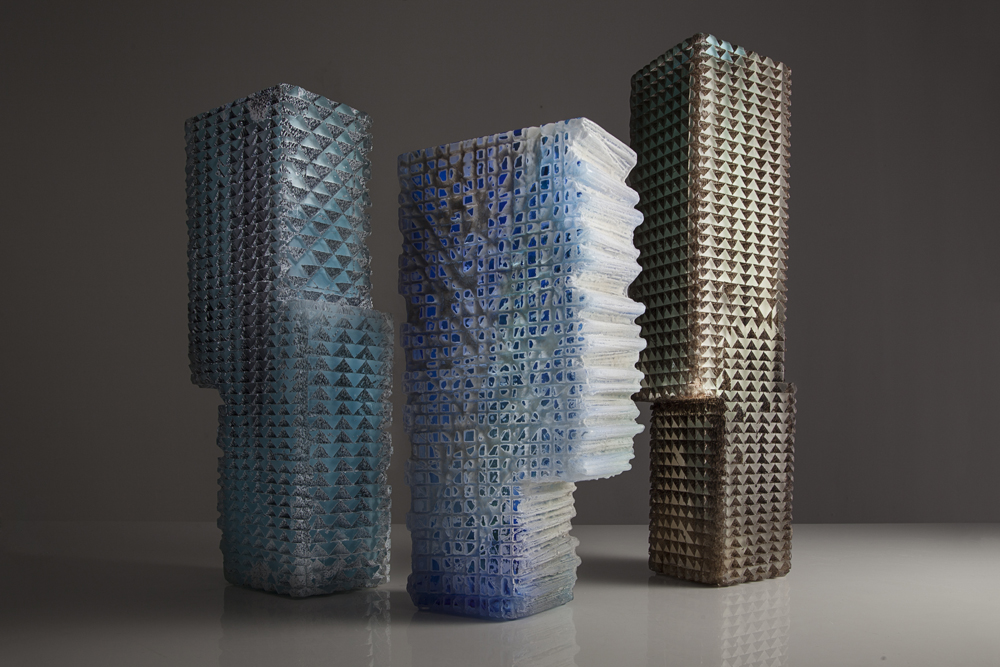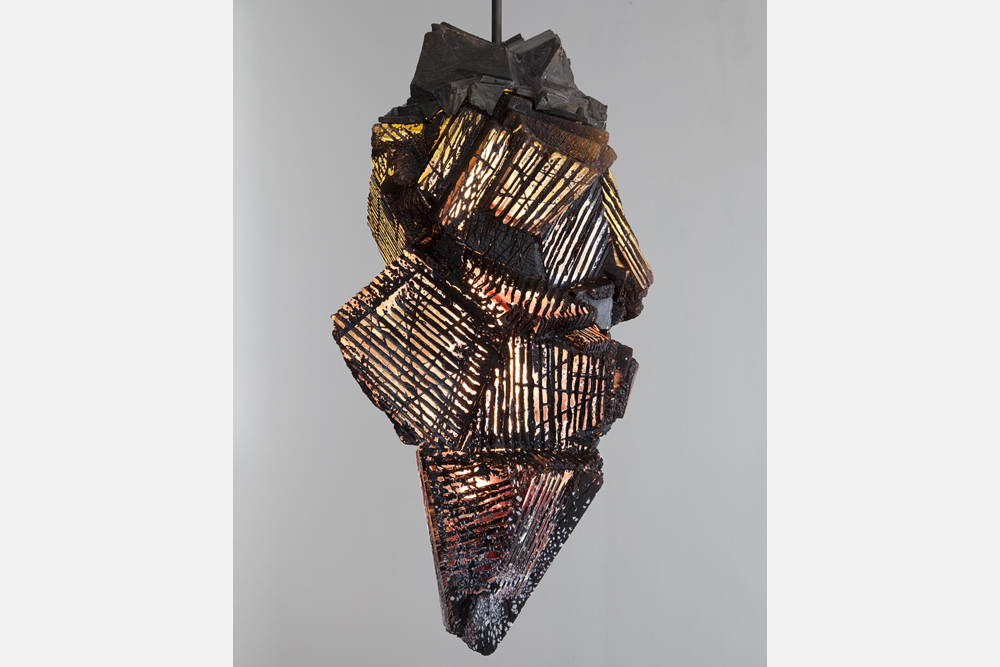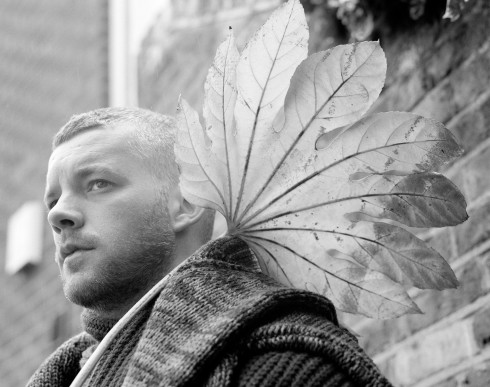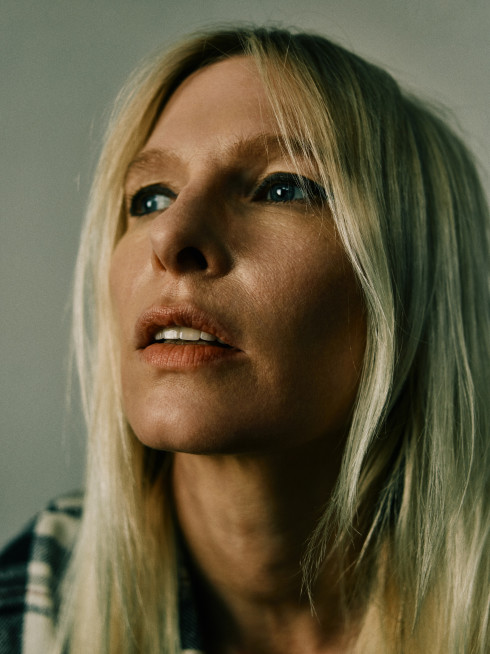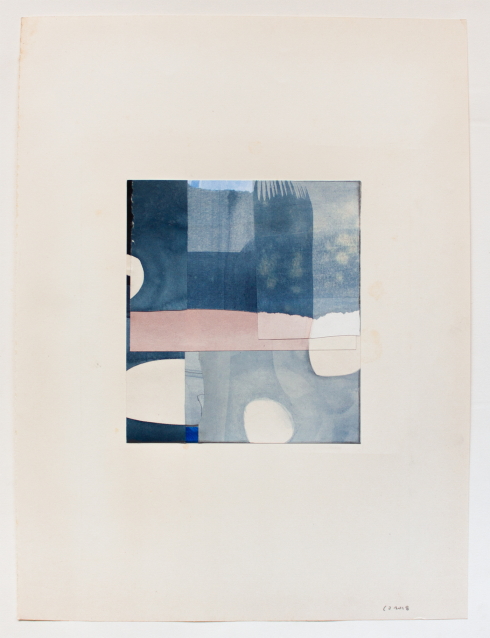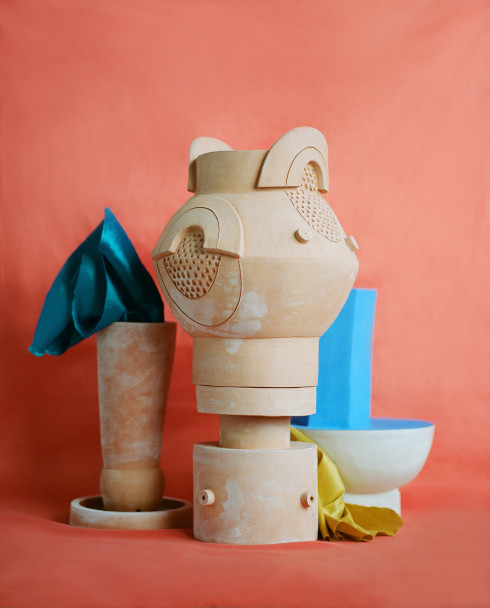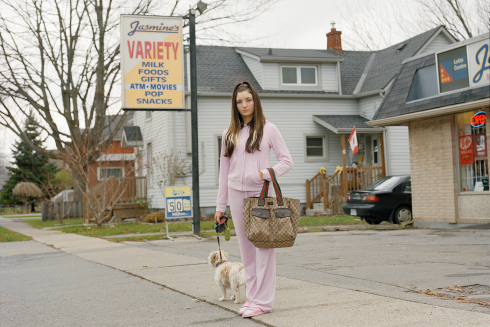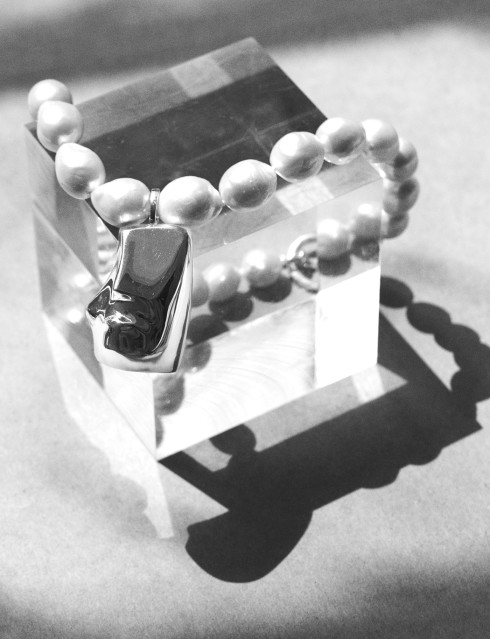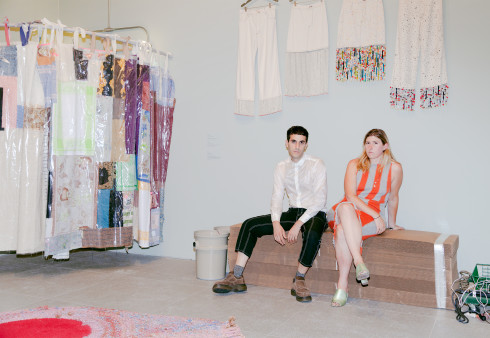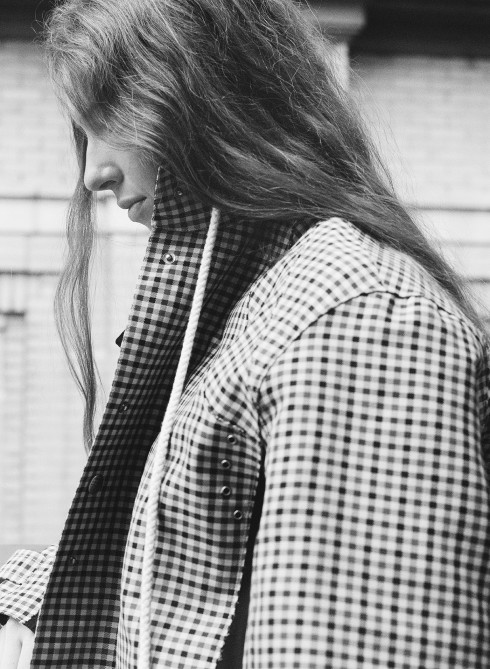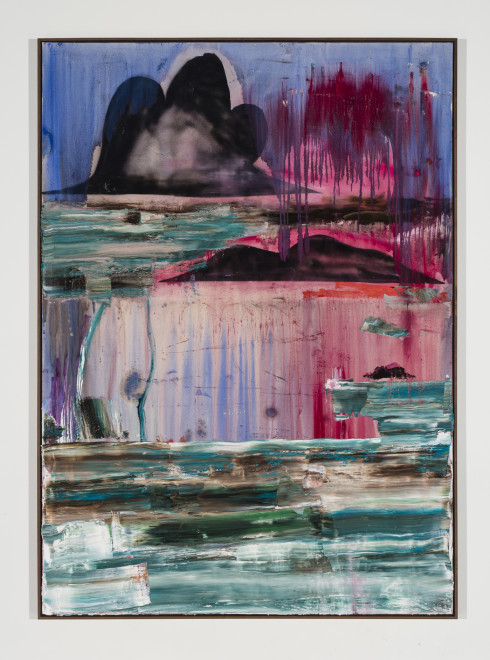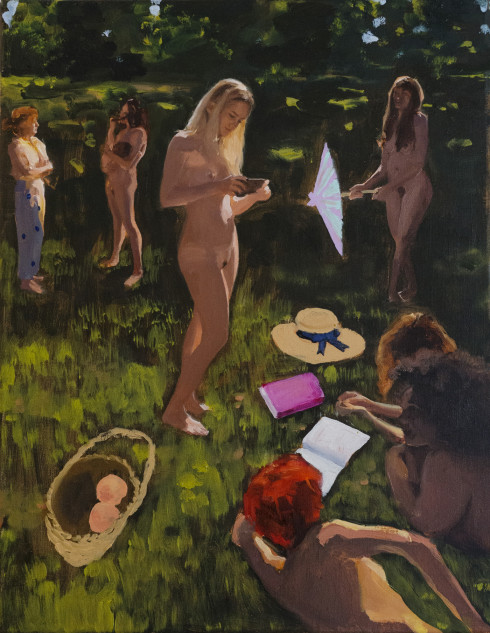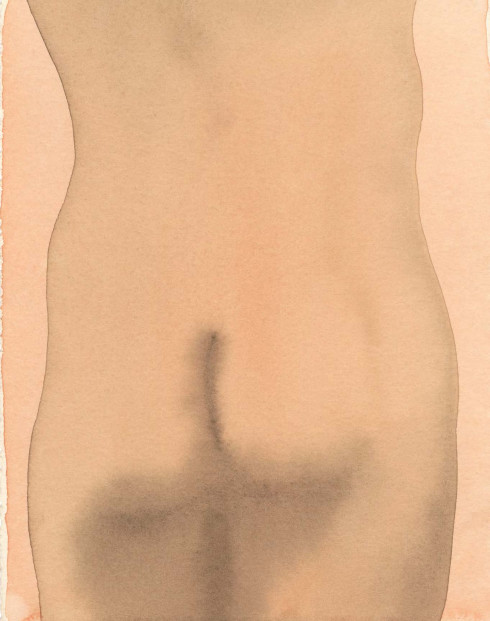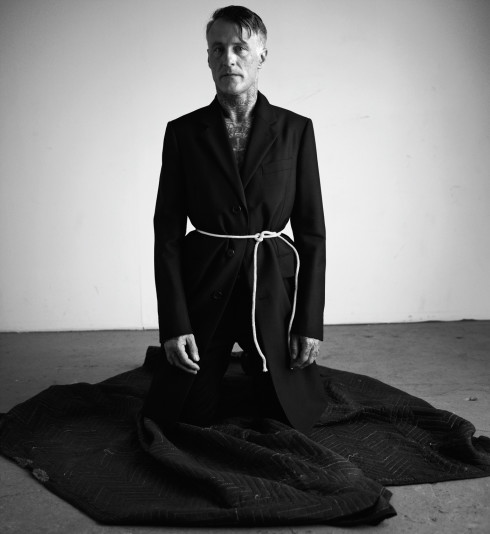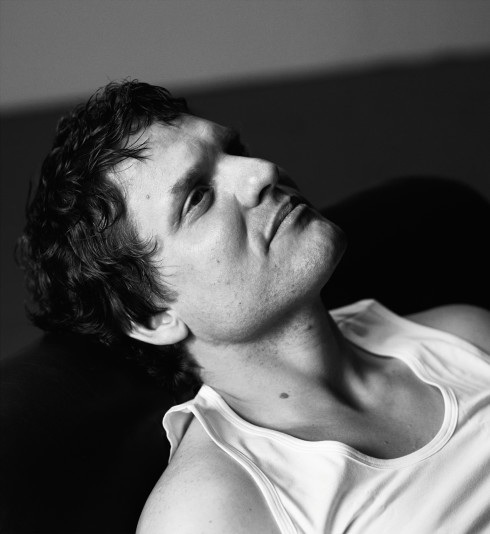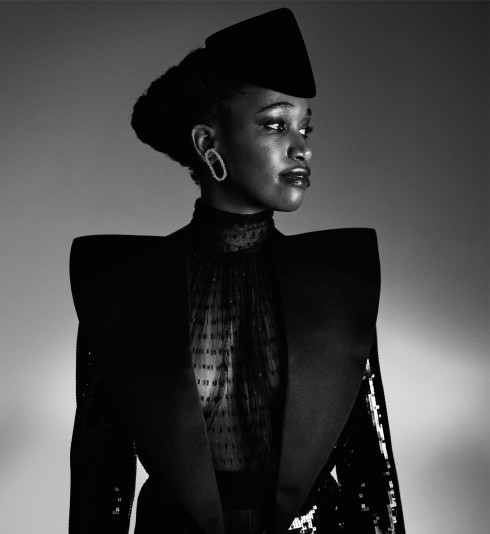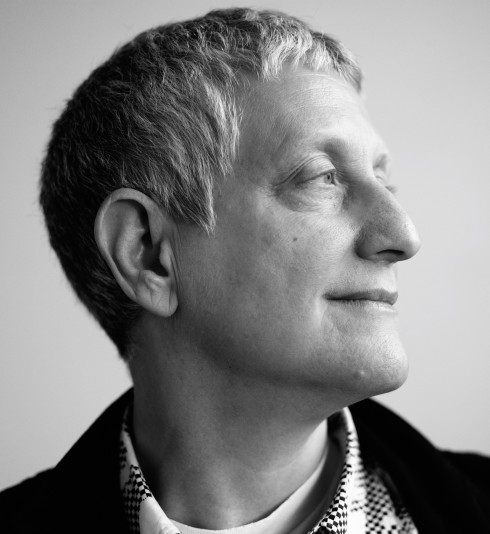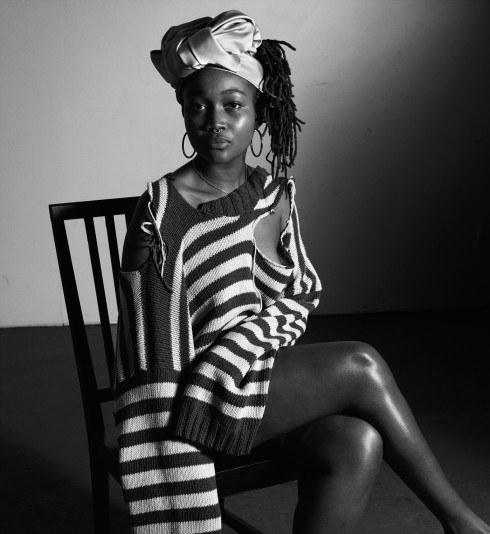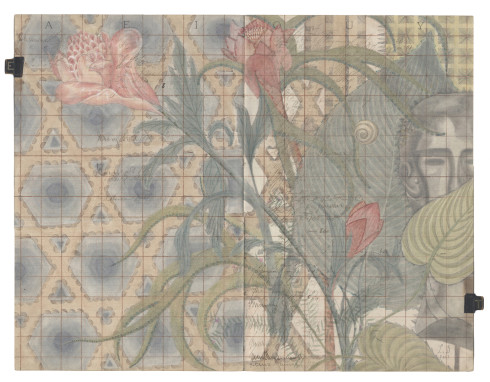
THADDEUS WOLFE
“The process I use is not unique,” insists artist Thaddeus Wolfe, whose striking glass pieces recall the elegant forms of classic modernist sculpture as well as the brawny silhouettes of Brutalist architecture.
The casual viewer might be tempted to argue otherwise. Wolfe’s signature pieces, his “Assemblage” series, are created through a complex, multipart process employing unique, single-use molds into which the artist painstakingly layers different colors and then carves into the resulting strata, revealing the distinctive, crystalline topographies of the finished forms. Wolfe emphasizes that his process is rooted in experimentation, which is critical to achieving the results he wants.
“Initially I was looking at mineral formations and their relation to Cubism and modern art forms,” Wolfe says. Those observations were a springboard for developing his own techniques for building the forms, which have engaged him since 2011.
“Now I look more to organic, natural forms,” he says, “but I never directly reference anything in the work. It’s an intuitive process.”
Wolfe, whose father is an architect, says that he’s been aware of the expressive potential of glass since childhood but never planned to devote his career to its use. However, the more he began to experiment with the unpredictable material, the more he found himself seduced by its malleable charms.
“Glass offers a nearly unlimited range of possibilities in terms of what you can produce,” Wolfe says. “It can be completely transparent, or you can incorporate different colors. It has wonderful tactility, and it’s semiprecious by nature. It’s a very physical process, working with glass, and it also involves working with other people; there’s a teamwork aspect to the glass fabrication process. For me, working with glass offers the best of both artistic worlds: being alone and also collaborating.”
The ability of the “Assemblages” to deftly straddle the line between the fine and applied arts has made them favorites of those who follow both fields, and since they first began to appear in 2011, Wolfe has been overwhelmed with interest. In the past few years, his work has been exhibited in New York at R & Company, E.R. Butler and Co., Matter, Heller Gallery, and the South Street Seaport Museum. In Chicago, he has shown with Volume Gallery.
Wolfe recently moved into a new studio space in Brooklyn and is preparing for an upcoming solo show at R & Company. Once that’s installed, he says, he’s looking to broaden the scope of his experimentation beyond the subtractive processes with which he’s been so absorbed over the past four years.
For his next act, Wolfe would like to expand the recent work he’s done with metal in his light fixtures by integrating different materials into his practice. He craves an immediacy and direct- ness, he says, that simply are not part of the glassmaking process. “Carving wood, working in ceramic—those media are much more direct than the way in which I’m working now,” Wolfe says. “It sounds great, making something and then painting or glazing it, versus the process with glass, in which you have to do everything in one shot. You can’t do anything super spontaneous with colors. Whatever happens is what you get.”
Beyond those constraints, Wolfe feels a more direct way of working would be a better complement to what’s happening at any given time inside his head.
“The problem really is that it becomes so time- consuming,” he laughs. “I can stockpile ideas and never get to them.”
Photography by Joe Kramm for R & Company.
Kevin Greenberg is the art editor of The Last Magazine. He is also a practicing architect and the principal of Space Exploration, an integrated architecture and interior design firm located in New York. In addition to his work for The Last Magazine, Kevin is an editor of PIN-UP, a semi-annual “magazine for architectural entertainment.”
